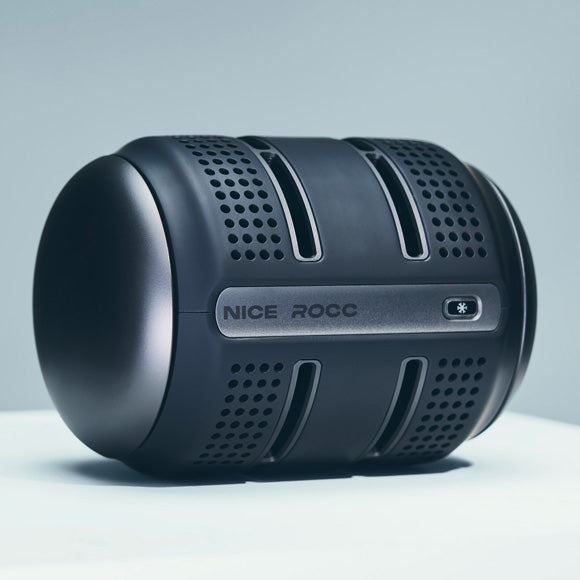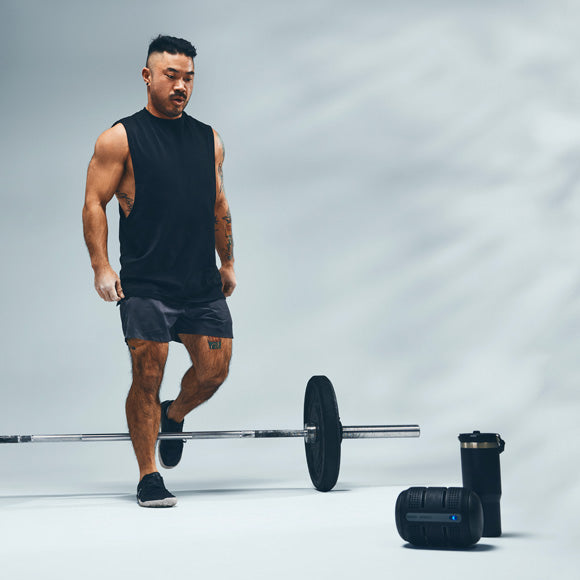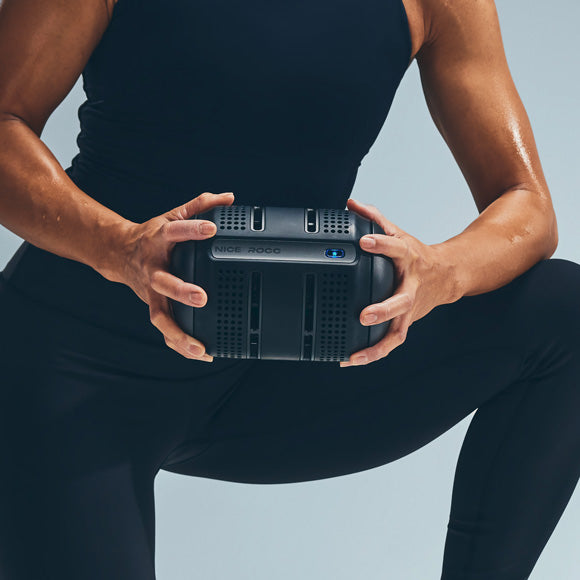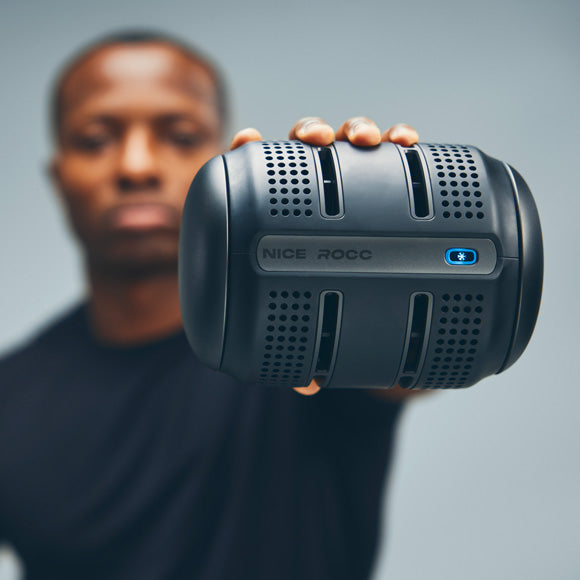Palm cooling is gaining increasing attention among weight lifters and strength-focused athletes seeking that extra edge in training. This method harnesses the body’s natural circulatory pathways to reduce overheating, helping you sustain energy, recover faster, and push through plateaus that once felt impossible. Over the last decade, several scientific studies have explored the relationship between core temperature and muscle performance, consistently pointing to heat management as a game-changer in physical training. The ability to cool your palms efficiently can play a significant role in delaying muscle fatigue, improving repetition volume, and even enabling heavier lifts.
This article covers the science behind heat’s impact on muscle function, how palm cooling works at a physiological level, and how weightlifters and fitness enthusiasts can apply these insights to experience real gains in strength. Throughout, references to recent studies and proven strategies will help bridge the gap between theory and practical application. By examining the evidence and learning best practices, athletes can unlock new levels of endurance and power.
Why Heat Management Matters in Weight Lifting
Muscle Fatigue and Core Temperature
High-intensity training or heavy lifting rapidly increases muscle temperature. Heat build-up is more than just a comfort issue; it directly affects muscle metabolism. Enzymes responsible for energy production—such as pyruvate kinase—become inhibited at elevated temperatures. Research published in the Journal of Applied Physiology (2013) showed that when muscle temperatures exceed approximately 40°C (104°F), the body begins shutting down certain metabolic processes to protect itself from potential damage.
When muscle temperature rises too high, adenosine triphosphate (ATP) production slows down. ATP is the essential energy currency for muscle contractions. Reduced ATP means your muscles fatigue quickly, you can’t push as many reps, and your strength output drops. For strength athletes, the difference between pushing through another rep or failing can define whether you advance to a new personal record or remain stuck at your current limits.
The Body’s Self-Protective Mechanisms
To avoid permanent harm, the body uses various defense strategies. Sweating helps remove heat, but it isn’t always sufficient during high-volume strength training. Blood flow is also redirected to the skin surface to facilitate cooling. However, this redirection can reduce the blood supply available to working muscles, potentially impairing the delivery of oxygen and nutrients. Essentially, your body is torn between cooling itself and sustaining the power output for those final reps.
For serious weightlifters, the short recovery breaks between sets might not be enough to bring core temperature back down to optimal levels. The result is a creeping sense of fatigue. Over time, this can hinder strength gains and slow down progress. That’s where strategic cooling methods come in, offering a more targeted approach to thermal regulation.
The Science Behind Palm Cooling
Palm cooling revolves around a special circulatory feature in the hands, known as arteriovenous anastomoses (AVAs). These AVAs form a shortcut for blood, bypassing the narrow capillaries typically encountered throughout the body. Unlike other skin areas covered in hair, the palms (as well as soles of the feet and parts of the face) have these unique blood vessels in higher concentrations.
How AVAs Enhance Cooling
In a 2012 study from Stanford University led by Dr. Craig Heller, the research team discovered that cooling blood in these glabrous (hairless) regions resulted in a faster reduction of core temperature. The cooled blood travels through the AVAs directly back to the core, where it circulates to working muscles. This approach cools muscles “from the inside out,” helping keep enzymatic functions—like ATP production—at optimal levels even during intense exercise.
What makes palm cooling particularly effective is that it can be calibrated to prevent vasoconstriction. If the skin is exposed to water or surfaces too cold (well below 50°F), blood vessels constrict and slow circulation, reducing cooling efficiency. Optimal temperature zones, typically between 50–60°F, ensure continuous blood flow without the body’s typical cold-shock response. This strategy contrasts sharply with older methods like dunking hands in ice water, which can quickly induce vasoconstriction, defeating the purpose.
Beyond Basic Cryotherapy
Although people have used ice and cold packs to alleviate pain or swelling for decades, precise palm cooling is different. Basic cryotherapy methods aren’t always practical or regulated. They can easily overshoot the target temperature, cause discomfort, or even risk cold-related injuries. By focusing on glabrous skin and maintaining a steady, controlled temperature, palm cooling gives athletes a safe, efficient method to manage heat stress and minimize muscle fatigue in real-time.
Recent Research Supporting Palm Cooling for Strength
Several peer-reviewed studies over the last 10 years have underscored the performance benefits that arise from keeping core temperature in an optimal range:
-
Stanford University (2012)
Researchers found that cooling the palms between sets of resistance training exercises allowed participants to sustain higher workloads and repetitions compared to those using standard methods of rest. Over six weeks, the cooled group displayed marked increases in performance. -
European Journal of Applied Physiology (2015)
A broader investigation into thermoregulation in athletes highlighted how moderate cooling of glabrous skin effectively lowered heart rate and core temperature, leading to greater endurance capacity. Although the study encompassed endurance athletes, the underlying principles apply to strength training and muscle preservation as well. -
International Journal of Sports Physiology and Performance (2019)
This research focused on cross-training athletes who supplemented intense lifting with cardio. Palm cooling during short rest intervals was associated with improved power output, particularly in later sets when core temperature is hardest to manage. -
Strength & Conditioning Journal (2021)
A systematic review found that targeted cooling strategies reduced muscular fatigue and improved repeated anaerobic performance in high-intensity scenarios. Several articles within the review highlighted the direct link between palm cooling and extended sets or heavier loads for strength-based activities.
These findings consistently demonstrate that heat management can boost an athlete’s capacity to perform repeated efforts. Palm cooling, when performed properly, can give individuals the stamina to power through extended or heavier sets, leading to faster strength gains.
Practical Applications for Weight Lifters
Timing of Palm Cooling
In many workout routines, rest intervals are short—typically 60 to 120 seconds between sets. Applying palm cooling devices during these windows can bring muscle temperature down just enough to allow ATP regeneration without drastically increasing session length. By the time you’re ready for your next set, your muscles have cooled sufficiently to function more efficiently.
Longer Sessions, Reduced Fatigue
Another advantage is in workouts that span an hour or more. As the session goes on, cumulative heat build-up can degrade performance. Incorporating palm cooling at mid-workout points, or whenever you feel that distinct heat-induced fatigue, can keep your performance level consistently higher throughout the entire training session.
Post-Workout Recovery
Once the main lifts are done, the body continues to generate heat as muscles repair micro-tears. Introducing targeted cooling in your post-workout routine can speed up the recovery phase. By lowering the inflammatory response and maintaining optimal blood circulation, you can potentially reduce delayed onset muscle soreness (DOMS) and prepare for your next session more quickly.
Palm Cooling vs. Cooling Towels and Ice Packs
Cooling towels can help keep skin temperature down but aren’t always effective in lowering core temperature. They often rely on evaporation and can’t maintain a precise temperature over time. Athletes who need targeted, consistent cooling see better results with palm-focused devices.
Ice packs placed on the palms run the risk of getting too cold. Once the skin temperature drops below 50°F, vasoconstriction can significantly reduce blood flow. While you might feel cooler, the overall core-cooling effect is diminished.
Myths and Misconceptions
“If You’re Already Sweating, You’re Cooling Enough”
Sweating is part of the body’s natural thermoregulation process. However, sweat alone may not keep you at the optimal temperature to sustain high levels of performance, especially in humid or poorly ventilated gyms. Sweating also results in electrolyte loss, potentially impacting muscle contractions.
“It’s Only Useful for Endurance Training”
Though palm cooling has notable benefits for endurance athletes, it’s not limited to them. Strength training demands significant ATP turnover, and any strategy that helps maintain enzyme function can produce tangible benefits in sets and loads.
Best Practices for Incorporating Palm Cooling
-
Find a Reliable Device
A device specifically designed for palm cooling—like the NICE ROCC palm cooling system from NICE Recovery Systems—maintains an optimal temperature range (50–60°F) without the need for ice or water. This ensures a consistent experience each time you use it. -
Use Between Sets
Integrate quick cooling sessions of 30–60 seconds during rest intervals. Some devices feature built-in haptic timers that alert you when optimal cooling is reached, so you don’t have to watch the clock. -
Track Your Performance
Look at measurable data such as the number of reps, the total weight lifted, or your perceived effort level. Over several weeks, see how palm cooling affects your progress, especially in later sets.
For an in-depth look at NICE Recovery Systems’ approach to performance thermoregulation, check out their blog on advanced recovery solutions.
FAQ Section
Q: Is Palm Cooling Safe?
A: Yes, when done correctly. Devices that maintain a moderate temperature (around 50–60°F) prevent vasoconstriction and are designed with user comfort in mind. As with any new practice, it’s wise to consult with a healthcare professional if you have specific medical concerns.
Q: Can Palm Cooling Help Me Lift Heavier Weights?
A: Many users report feeling more prepared for heavier lifts because reduced heat stress means longer-lasting ATP supply. Scientific research over the last decade has consistently shown a correlation between palm cooling and improved exercise capacity, including heavier sets.
Q: Will Palm Cooling Break Through Strength Plateaus?
A: While no method is a guaranteed quick fix, many athletes use palm cooling as one aspect of a comprehensive training strategy. By keeping muscles cooler, you can potentially add more volume to workouts, which often helps break through performance plateaus.
Q: Do I Need Specialized Equipment for Palm Cooling?
A: Specialized devices are recommended for best results. These devices, like the ROCC from NICE Recovery Systems, maintain a steady temperature in the optimal range. Basic cold packs aren’t as precise and may cause vasoconstriction.
Q: How Long Should I Cool My Palms?
A: Most protocols recommend 30–90 seconds between sets, but it varies by individual. Advanced devices with built-in timers can help you find the sweet spot without guesswork.
Maximizing the Benefits: Step-by-Step Strategy
-
Warm-Up
Begin with dynamic stretching and low-intensity lifts to activate muscles. Keep rest times short during this phase; it’s more important to prime the muscles and increase blood flow. -
Gradually Increase Intensity
Move into heavier loads or higher-volume sets as part of your main workout. Once your core temperature starts rising and you feel muscle fatigue, take advantage of palm cooling. -
Monitor Duration
Ensure that each cooling session is neither too short (which may not significantly reduce temperature) nor too long (which can cut into training time). Aim for consistency in each rest interval. -
Stay Aware of Internal Cues
Athletes often learn to sense when their muscles are overheating. Signs include a sharp decline in rep count or a sudden feeling of muscle failure not explained by simple fatigue. Use these sensations as a cue to apply another cooling session. -
Cool Down
Incorporate palm cooling into your cooldown routine. By helping the body return to a baseline temperature more quickly, you can reduce muscle soreness and speed recovery.
Strength, Endurance, and the Role of ATP
A deeper look at the biochemistry of muscle contraction further clarifies the importance of cooling. ATP is generated by glycolysis, which relies on key enzymes like pyruvate kinase. When muscle temperature is within an optimal range, enzyme activity stays high, ensuring that each repetition or heavy lift has the fuel it needs. Once temperature creeps past a certain threshold, ATP production stalls, causing that abrupt performance drop recognizable to every weightlifter.
Palm cooling steps in by lowering internal temperatures, thus removing the heat-based inhibition on enzyme function. This effect can extend both anaerobic power (short bursts of high-intensity output) and aerobic endurance when training across multiple sets.
Long-Term Benefits Beyond the Gym
-
Reduced Overtraining Risk
By controlling heat accumulation, you may notice fewer signs of overtraining. Chronic elevations in core temperature contribute to systemic fatigue and slow recovery rates. -
Consistent Progress
Pushing a few more reps every session has a compounding effect over weeks and months. Palm cooling, used consistently, may accelerate progress on primary compound movements like squats, deadlifts, and bench presses. -
Adaptability Across Different Sports
For athletes who mix disciplines—like CrossFit enthusiasts or hybrid-training aficionados—palm cooling can serve as a critical bridge between strength work and metabolic conditioning (MetCon). It keeps performance more stable across a broad range of activities. -
Versatility in Variable Climates
From unairconditioned gyms in the summer to heated spaces in colder regions, palm cooling provides a portable way to manage workout conditions anywhere you train.
Take Your Strength Training to the Next Level
Making consistent progress in weight lifting requires both smart programming and reliable recovery strategies. Palm cooling stands out as an innovative way to manage heat stress, delay muscle fatigue, and unlock new strength gains. Precision devices that maintain optimal temperatures can add significant value to your workout routine, helping you sustain output across multiple sets and reduce the risk of plateauing.
External References (Recent Studies)
-
Heller, C. G., & Grahn, D. (2012). Stanford University Research on Palm Cooling and Exercise Capacity.
-
European Journal of Applied Physiology (2015). Investigations into Thermoregulation and Performance.
-
International Journal of Sports Physiology and Performance (2019). Thermoregulatory Interventions in Cross-Training Athletes.
-
Strength & Conditioning Journal (2021). Comprehensive Review on Muscle Cooling Techniques.




